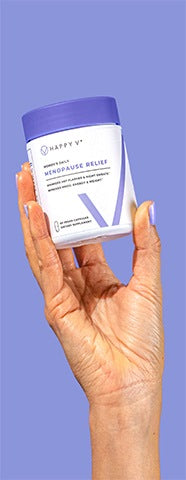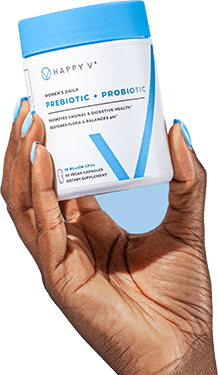What is Bacterial Vaginosis (BV)?
In the United States alone, over 21M women between the ages of 14-49 will experience Bacterial Vaginosis (BV) this year. It’s the most uncomfortable type of vaginal infection you’ve never heard of.
95% of those 21M — yeah, we said million — women affected say BV affects their sex lives.
80% admitted the symptoms make them feel uncomfortable in social settings.
Happy V® is here to change that.

BV signs and symptoms
-
Unusual or unpleasant vaginal odor
-
Thin, milky white or gray vaginal discharge
-
Vaginal itching, burning, irritation or discomfort
-
Increased pH
How Bacterial Vaginosis occurs
We’ll break it down for you. No medical encyclopedia required. The vagina has an ideal pH, which is slightly acidic, where “flora,” or healthy vaginal bacteria thrive.
“Anaerobes” are micro-organisms that don’t need a lot of oxygen to live. Bacterial vaginosis happens when your anaerobes overpower the good bacteria in the vagina.
An epic battle of good versus evil, but in your body happening at every moment. Pretty cool, huh?
-
ph < 3.8
Lactobacillus make up more than 95% of the bacteria within the vaginal flora, creating H202, a natural mechanism that fights off bad bacteria.
-
ph > 4.5
When an environment changes to a more basic (alkalized) pH, due to menstrual blood, diet, and even semen, anaerobes begin to grow.
-
ph ≈ 6
As pH continues to stay basic, anaerobic Lactobacillus and Gardnerella thrive.
-
ph > 7
Once anaerobes outnumber beneficial bacteria, the symptoms of Bacterial Vaginosis start to show. However, nearly 30% of women will be asymptomatic (will not show symptoms).
Understanding Bacterial Vaginosis
Here at Happy V, we've created the ultimate guide to understanding BV. It’s always important to see a doctor, but our guide is a great start to understanding what might be going on, including symptoms, treatment and prevention.
What is Bacterial Vaginosis






































